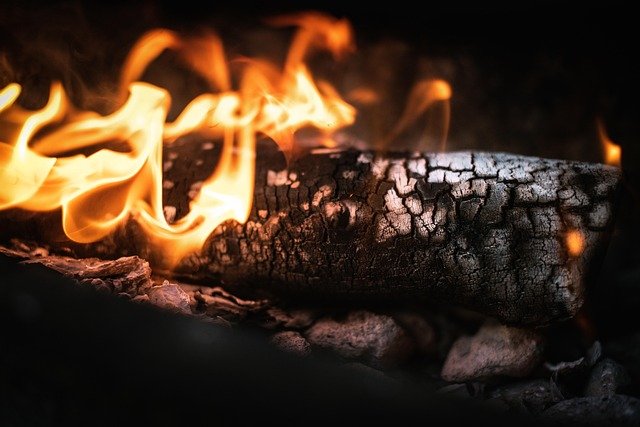The Warmth and Comfort of Wood Burning Stoves: A Comprehensive Guide
Wood burning stoves have been a staple in homes for centuries, providing warmth, comfort, and a focal point for family gatherings. These efficient heating devices offer a unique blend of traditional charm and modern functionality, making them an attractive option for homeowners looking to enhance their living spaces. In this article, we'll explore the various aspects of wood burning stoves, their benefits, and how they compare to other heating methods.

Wood burning stoves also provide better control over the fire and heat output. Most models feature adjustable air vents that allow you to regulate the burn rate and temperature. This level of control is not possible with a traditional fireplace, where the fire tends to burn freely and unpredictably.
Additionally, wood burning stoves are generally safer than open fireplaces. Their enclosed design reduces the risk of sparks or embers escaping and causing accidents. Many modern stoves also come with built-in safety features, such as heat-resistant glass doors and improved flue systems, further enhancing their safety profile.
How do wood burning stoves contribute to home heating efficiency?
Wood burning stoves are remarkably efficient when it comes to home heating. They work by burning wood at high temperatures, which creates a steady source of radiant heat. This heat is then distributed throughout the room and, in some cases, to other parts of the house through natural convection or with the help of fans.
The efficiency of a wood burning stove is measured by its heat output and how completely it burns the wood. Modern stoves can achieve efficiency ratings of up to 80% or more, meaning that most of the energy from the wood is converted into usable heat. This is a significant improvement over traditional open fireplaces, which typically have efficiency ratings of only 10-20%.
Many wood burning stoves also incorporate advanced combustion technologies, such as secondary burn systems. These systems re-burn the gases and particles that would otherwise be lost up the chimney, extracting even more heat from the fuel and reducing emissions.
What are the environmental considerations of using a wood burning stove?
When it comes to environmental impact, wood burning stoves present both advantages and challenges. On the positive side, wood is a renewable resource, and when sourced responsibly, it can be considered a carbon-neutral fuel. Trees absorb carbon dioxide as they grow, and when burned, they release only the carbon they’ve stored during their lifetime.
However, it’s important to note that wood burning does produce particulate matter and other emissions that can contribute to air pollution, especially if the stove is not used correctly or if wet or unsuitable wood is burned. To mitigate these concerns, many modern wood burning stoves are designed to meet strict environmental standards, such as those set by the Environmental Protection Agency (EPA) in the United States.
To minimize environmental impact, it’s crucial to use dry, seasoned wood and operate the stove according to the manufacturer’s instructions. Additionally, some regions may have regulations on when and how wood burning stoves can be used, particularly during air quality alerts.
How do you choose the right wood burning stove for your home?
Selecting the right wood burning stove for your home involves considering several factors. First, you’ll need to determine the appropriate size based on the space you want to heat. A stove that’s too small won’t provide enough warmth, while one that’s too large may overheat the area and waste fuel.
Consider the heat output, which is typically measured in British Thermal Units (BTUs). As a general rule, you’ll need about 20-30 BTUs per square foot of living space, depending on factors like insulation and ceiling height.
The style of the stove is another important consideration. Wood burning stoves come in various designs, from traditional cast iron models to modern steel versions. Choose a style that complements your home’s decor and meets your aesthetic preferences.
Pay attention to the stove’s efficiency rating and any environmental certifications it may have. Look for models that meet or exceed EPA standards for emissions and efficiency.
Finally, think about additional features that might be important to you, such as a large viewing window, a cooking surface, or the ability to connect to a central heating system.
What maintenance is required for a wood burning stove?
Proper maintenance is essential for the safe and efficient operation of a wood burning stove. Regular cleaning is the most important aspect of stove maintenance. This includes removing ash from the firebox, cleaning the glass door if present, and sweeping the chimney or flue at least once a year.
Inspect the stove regularly for any signs of wear or damage, particularly to the door seals, which are crucial for controlling airflow and maintaining efficiency. Replace any worn or damaged parts promptly.
It’s also important to use the right kind of fuel. Burn only dry, seasoned hardwood with a moisture content of 20% or less. Wet or green wood burns inefficiently and can lead to the buildup of creosote in the chimney, increasing the risk of chimney fires.
Periodically check the stovepipe and chimney for any obstructions or buildup of creosote. Professional chimney sweeps can perform thorough cleanings and inspections to ensure your system is operating safely and efficiently.
By following these maintenance guidelines, you can ensure that your wood burning stove remains a safe, efficient, and enjoyable source of heat for your home for many years to come.






